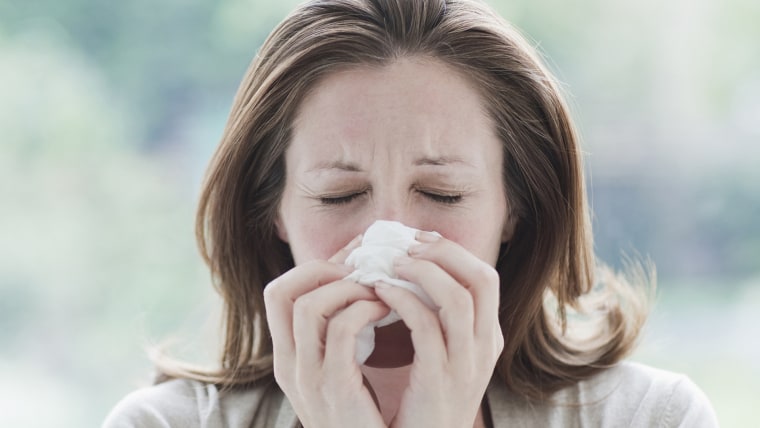It's the season for spring cleaning — and you might want to start with your pillows.
Recent reports have shed light (er, horror) on the fact that there are millions of tiny, dead bugs living in our pillows. And yes, it's true. They're called dust mites — they're teeny, tiny arthropods, according to the Asthma and Allergy Foundation of America. And they're munching on your dead skin cells.
"They don't bite people — they're not like ticks or fleas, although they're in that family," Dr. Gailen Marshall, an allergist and immunologist at the University of Mississippi Medical Center, told TODAY. "The problem is that they go where there are a lot of skin scales. One of the best places in the world is your pillow. These little dust mites take those skin scales that come off of you and me and everyone else and eat them."

Dust mites are too small to see without a microscope, but they look like tiny, white bugs. When they die, dust mites' bodies (and their waste) is left behind, buried deep in our pillows, bedding, furniture, carpets and more. (Ugh...) And when we breathe that in, it can cause allergies.
RELATED: How often should you clean your pillows?
Marshall called dust mites an "increasing problem" due to warmer temperatures, and said they can be especially problematic during allergy season, when people are already experiencing seasonal allergies.
What does a dust mite allergy look like?
Think runny or stuffy nose, itchy eyes and sneezing. That's right: typical allergy symptoms. So you might have a dust mite allergy, and not even know it. Given that we're already dealing with high levels of pollen, it's a good time to try to get rid of some of the dust mites currently living in your home. You probably won't be able to kill them all, but washing your bedding, including your pillows, is a good start.
"It's very difficult to kill (dust mites) completely," Marshall said. "You just kind of control them."
RELATED: The best over-the-counter drugs to treat your allergies
The Asthma and Allergy Foundation of America recommends people wash their sheets and blankets once a week in hot water, invest in pillow and mattress covers and avoid wall-to-wall carpeting, if possible. Regular and careful dusting can help, too, Marshall said.
The place you should focus on the most? The bedroom. That's likely where you have the most skin scales lurking — in other words, food for the dust mites.
"If (patients) are persistent about controlling the amount of food and dust in the bedroom, we typically see symptoms get much better," Marshall said.